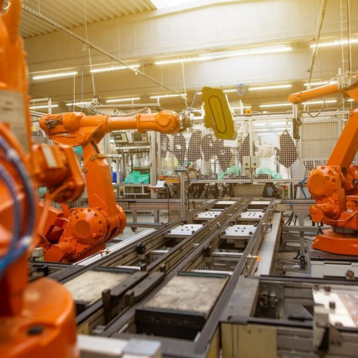The increased power offered is due to the usage of a component that draws on oxygen from the air during discharge. The oxygen substitutes one of the chemical elements employed in rechargeable batteries today and therefore reduces the weight and size while increasing output power.
The project, which started in 2005, was initiated by a breakthrough at the university according to which the carbon component’s interaction with air can be replicated, generating a rotation of charge and discharge. Principal investigator on the project, Professor Peter Bruce of the Chemistry Department at the University of St Andrews, says: “Our target is to get a five to ten fold increase in storage capacity, which is beyond the horizon of current lithium batteries. Our results so far are very encouraging and have far exceeded our expectations.”
The battery is constructed with a section exposed to air. Oxygen will flow through the battery and into the pores of the carbon, simultaneously discharging the battery. This process is both renewable and free, as the oxygen acts as a re-agent and there is no need for chemicals in the battery.
The conventional, rechargeable lithium batteries hold three main components: a graphite negative electrode, an organic electrolyte, and lithium cobalt oxide as the positive electrode. The STAIR battery substitutes the lithium cobalt oxide electrode with a porous carbon electrode. On discharge, the lithium in the electrolyte and electron’s external circuit combines with oxygen from the air.
The resultants were found to be an average of 1,000 mA/hour per gram of carbon (mA/hour/g) in capacity to weight ratio, while the team also reported to have achieved a maximum value of 4,000 mA/hours/g.
Extensive tests were conducted in order to establish the electrochemical decomposition of Li2O2. Powder X-ray diffraction data was gathered on porous composite electrodes prior to and subsequent to discharging where adequate charges were obtained to decompose altogether the Li2O2 that materialized on the earlier discharge.
The team has also investigated the effect of catalyst type, sampling from an array of transition metal oxides: MnO2, Fe2O3, Fe3O4, CuO, Co3O4, and CoFe2O4. The catalyst component not only manipulates the capacity but also influences the potential needed to initiate the reverse reaction and recharge the cell.
The team from St. Andrews is currently in the process of developing a smaller version of the STAIR cell prototype for small applications, such as mobile phones or MP3 players. Prof. Bruce estimates that it will be at least five years before the STAIR cell becomes commercially available.
You are welcome to check out our recent video on how to create a lemon battery by simply inserting two different metallic objects into the fruit as electrodes, thus causing an electrochemical reaction which generates a small potential difference. TFOT has also written about the “aigo” Portable Solar Charger for mobile devices and battery viruses that can generate power through viruses half the size of a human cell.
Additional information on STAIR can be obtained at University of St. Andrew’s website as well as on their funding partners’ (Engineering and Physical Sciences Research Council) website.
Icon image: Alpha-MnO2 nanowires tested as a catalyst in the oxygen electrode in rechargeable lithium batteries. (Credit: University of St. Andrews)










